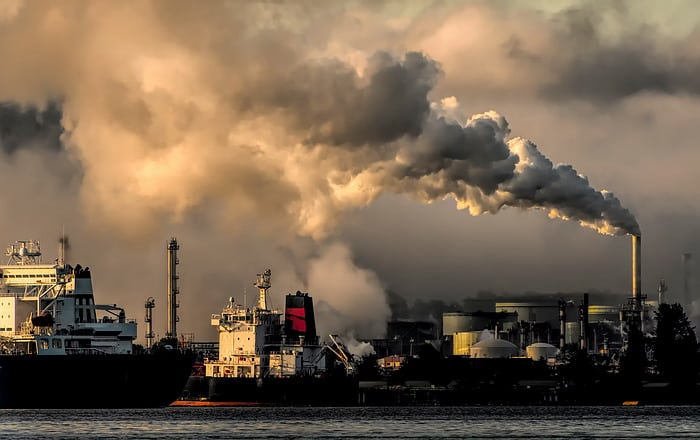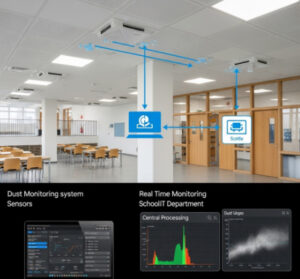Advantages and Disadvantages of Air Pollution

Air pollution, a pervasive environmental issue, has both advantages and disadvantages, albeit in a rather counterintuitive sense. While the negative impacts of air pollution on human health and the environment are well-documented, there are certain contexts where some aspects of air pollution have been argued to confer certain advantages. This article aims to provide a comprehensive analysis of the advantages and disadvantages of air pollution, exploring the multifaceted nature of this global concern.
Advantages of Air Pollution
Agricultural Benefits
One unexpected advantage of air pollution lies in its contribution to agriculture. Certain air pollutants, such as nitrogen oxides and sulfur dioxide, can act as fertilizers when deposited onto the soil through precipitation. This phenomenon, known as acid rain, can enhance soil fertility and promote plant growth in some cases.
Global Temperature Regulation
Particulate matter released into the atmosphere through activities like volcanic eruptions and industrial processes can have a cooling effect on the Earth’s surface. These particles reflect sunlight back into space, leading to a temporary reduction in global temperatures. This has been considered a potential counterbalance to the warming effects of greenhouse gas emissions, though it comes with severe environmental repercussions.
Aesthetic Effects
In urban areas, certain pollutants like sulfur dioxide can contribute to the formation of colorful sunsets. While this may be visually appealing, it is essential to note that the same pollutants causing this effect can be harmful to human health and the environment.
Disadvantages of Air Pollution
Health Impacts
One of the most significant and widely recognized disadvantages of air pollution is its detrimental impact on human health. Exposure to air pollutants, such as particulate matter, ozone, and nitrogen dioxide, has been linked to respiratory diseases, cardiovascular problems, and an increased risk of premature death.
Environmental Degradation
Air pollution poses a severe threat to the environment. It can lead to the acidification of soil and water bodies, negatively affecting plant and aquatic life. Additionally, pollutants like sulfur dioxide and nitrogen oxides contribute to the formation of acid rain, which harms ecosystems, damages buildings, and corrodes infrastructure.
Climate Change Acceleration
The release of greenhouse gases, including carbon dioxide and methane, contributes to the warming of the Earth’s atmosphere, leading to climate change. Rising global temperatures, altered precipitation patterns, and more frequent extreme weather events are among the adverse consequences of air pollution-induced climate change.

Air pollution in Europe (Sweden), image source: Unsplash
Economic Costs
The economic burden of air pollution is substantial. Healthcare costs associated with treating pollution-related illnesses, decreased agricultural productivity, and damage to infrastructure contribute to a significant economic toll. Furthermore, industries may face regulatory measures and financial penalties for their role in pollution.
Loss of Biodiversity
Air pollution can have cascading effects on biodiversity. Direct exposure to pollutants harms wildlife, while acid rain and climate change can alter habitats, disrupt ecosystems, and contribute to the decline of certain species. The delicate balance of ecosystems is threatened by the consequences of air pollution.
Impacts on Water Quality
Airborne pollutants can settle into water bodies, leading to water pollution. This not only affects aquatic life but also poses risks to human communities that rely on contaminated water sources. Nutrient deposition from the atmosphere can contribute to harmful algal blooms and eutrophication.
Ongoing Challenges and Future Directions
Addressing the multifaceted issues associated with air pollution requires a nuanced approach. The continued reliance on fossil fuels, industrial processes, and unsustainable agricultural practices contributes to the persistence of air quality problems. To move towards a cleaner and healthier environment, several key areas warrant attention:
Renewable Energy Adoption
Transitioning to renewable energy sources, such as solar, wind, and hydropower, is crucial for reducing the emissions of pollutants from fossil fuel combustion. Governments and industries should invest in and incentivize the development and implementation of sustainable energy technologies.
Stringent Environmental Regulations
Governments worldwide need to enforce and strengthen environmental regulations that limit emissions from industrial facilities, power plants, and transportation. Implementing and monitoring compliance with air quality standards are vital steps in mitigating the adverse effects of pollution.
Technological Innovation
Investing in research and development of innovative technologies can lead to breakthroughs in pollution control. Advanced filtration systems, cleaner industrial processes, and emission-reducing technologies for vehicles are examples of areas where innovation can make a substantial impact.

Air pollution in the city (Toronto, Canada), image source: Unsplash
Public Awareness and Education
Increasing public awareness of the consequences of air pollution is essential for fostering a sense of responsibility and encouraging sustainable practices. Educational initiatives can empower individuals to make environmentally conscious choices, from reducing energy consumption to supporting clean transportation alternatives.
International Collaboration
Air pollution knows no borders, and concerted global efforts are necessary to address its root causes and effects. International collaboration on research, technology transfer, and the sharing of best practices can contribute to a more coordinated and effective response to this global challenge.
Green Urban Planning
Designing cities with a focus on sustainability and green spaces can mitigate the impact of air pollution in urban areas. Green infrastructure, such as parks and trees, can help absorb pollutants and improve overall air quality.
Promotion of Sustainable Agriculture
Implementing sustainable agricultural practices, such as precision farming and organic methods, can reduce the release of pollutants into the air and water. Encouraging the use of environmentally friendly fertilizers and pesticides is also critical.
The Path Forward
While the disadvantages of air pollution are formidable, the ongoing efforts to address these challenges provide hope for a cleaner and healthier future. Recognizing the interconnectedness of environmental, social, and economic systems is essential for implementing effective and sustainable solutions.
Individuals, communities, businesses, and governments all play integral roles in shaping the trajectory of air quality. By embracing a collective responsibility to curb pollution, society can pave the way for a more sustainable coexistence with the environment.
In conclusion, the advantages of air pollution are overshadowed by its far-reaching and detrimental consequences. Acknowledging the severity of the issue is the first step towards meaningful change. As we navigate the complexities of this environmental challenge, a commitment to sustainable practices, technological innovation, and global cooperation is imperative for safeguarding the well-being of current and future generations. Only through a unified and determined effort can we hope to overcome the disadvantages of air pollution and build a healthier, cleaner planet.
Conclusion
In conclusion, the advantages and disadvantages of air pollution paint a complex picture of a global challenge that demands urgent attention and comprehensive solutions. While certain aspects of air pollution may seem beneficial in isolated contexts, the overwhelming negative consequences on human health, the environment, and the economy cannot be ignored. Mitigating air pollution requires concerted efforts at the individual, community, and governmental levels to adopt cleaner technologies, implement stricter regulations, and promote sustainable practices. Only through a collective commitment to reducing air pollution can we hope to create a healthier and more sustainable future for our planet.







